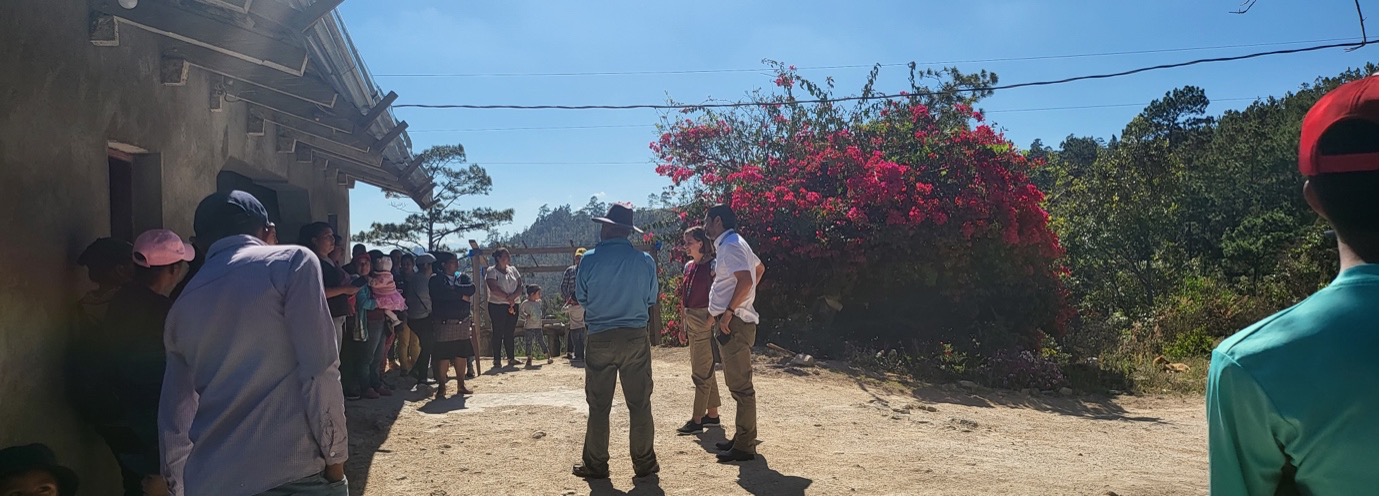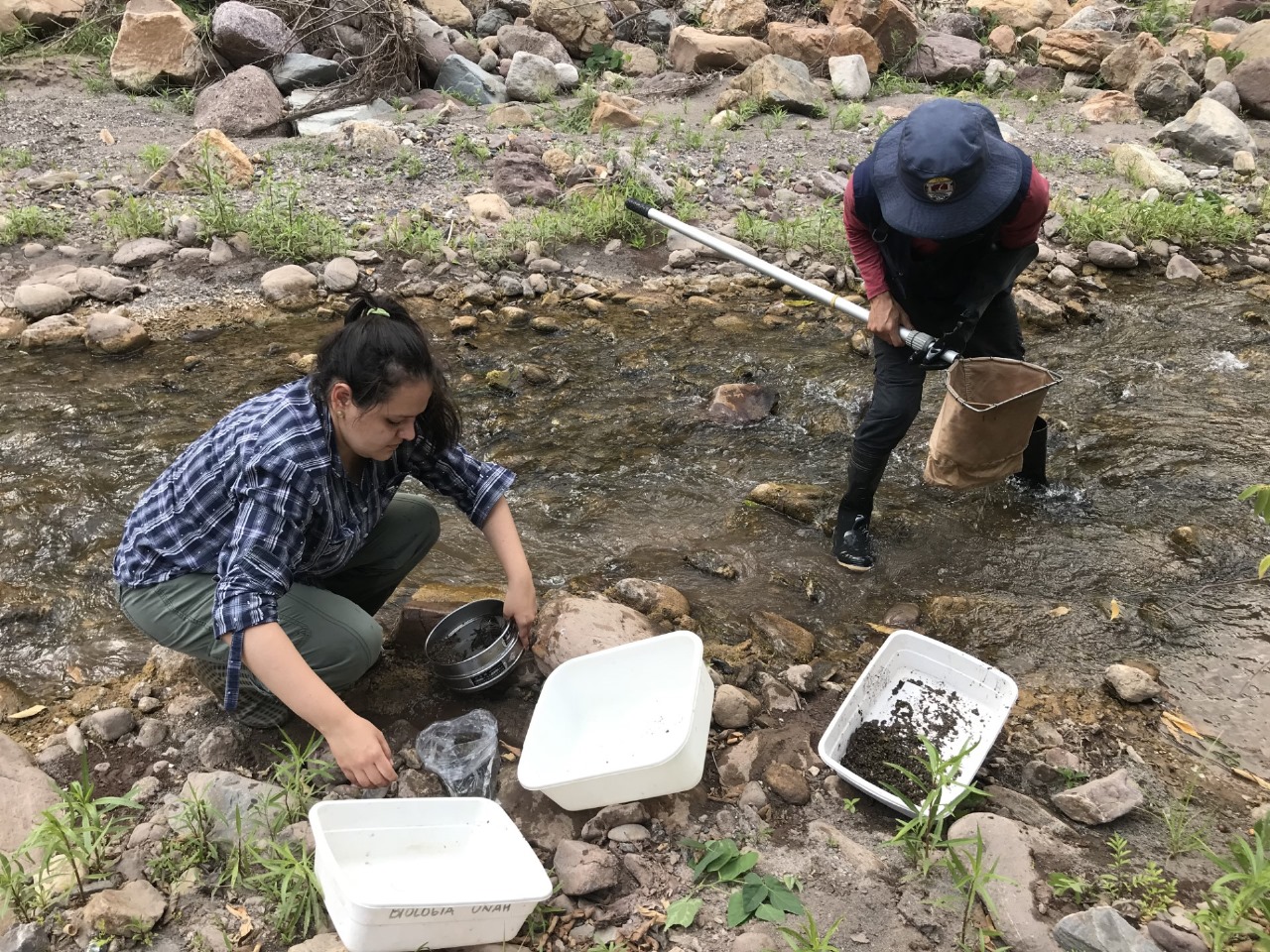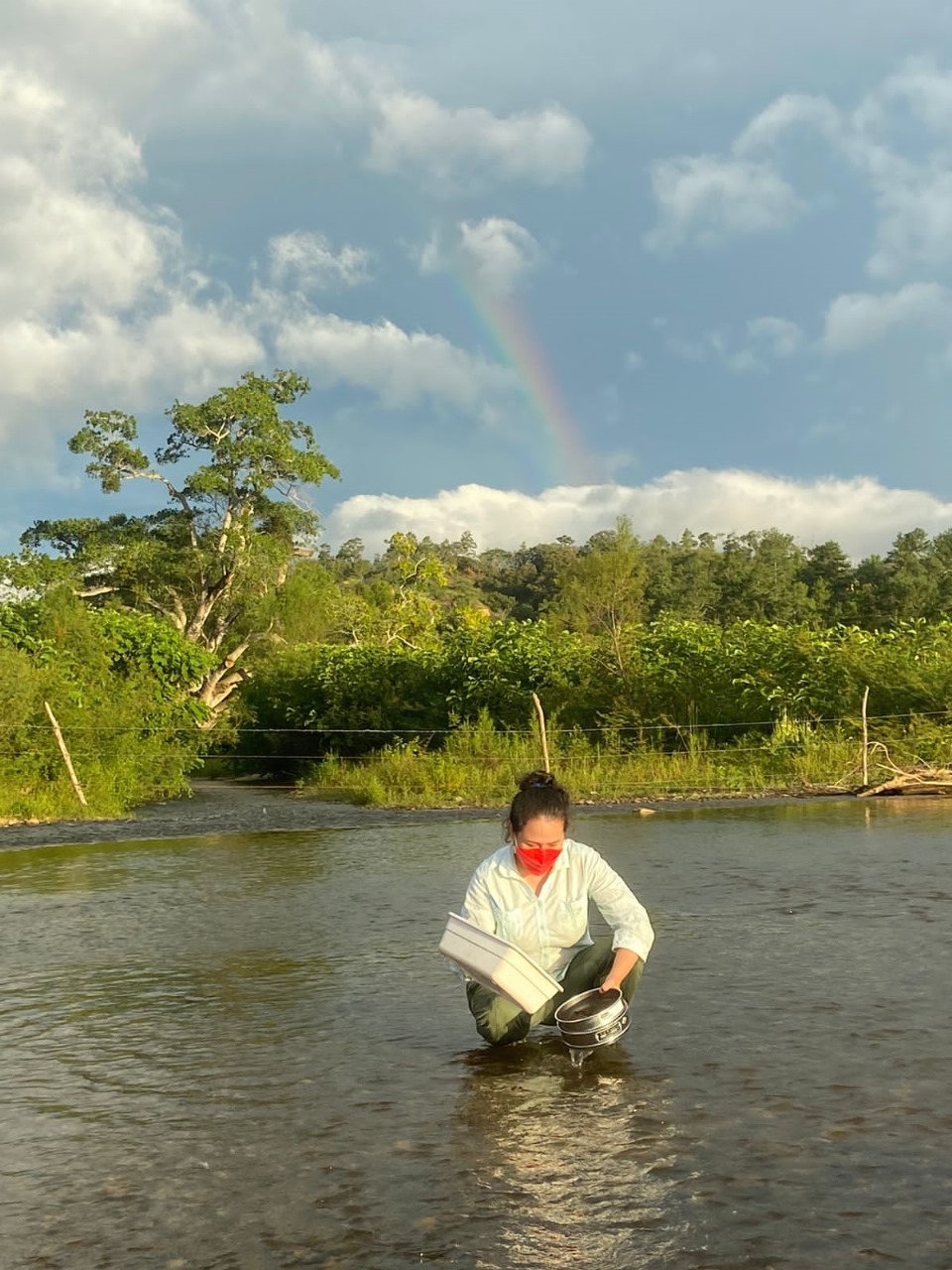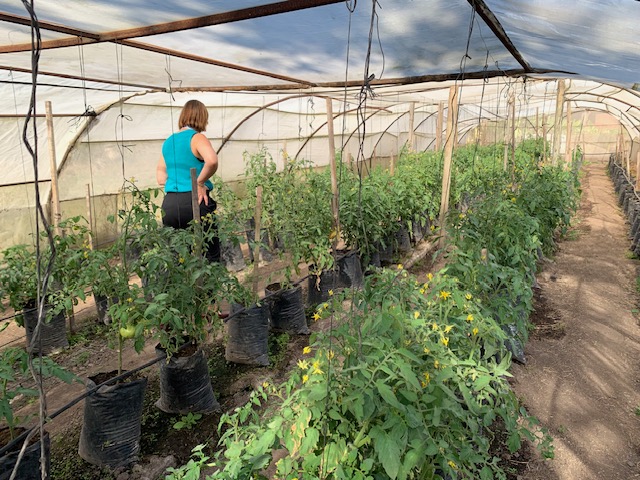How forests and young people are solving Honduras’s water crisis
September 7, 2023

As demand for fresh water grows, young researchers at the Universidad Nacional Autónoma de Honduras are working with local communities on comprehensive solutions.
Water shortages are common in the Honduran capital of Tegucigalpa. Last year, the head of the Honduran water and sewer authority, SANAA, described the situation as a “humanitarian crisis”. The situation remains acute and, in fact, is projected to worsen due to climate change. One model predicts that by the end of the century rainfall in Honduras will drop by 20 percent, and water availability, the rainfall that finds its way into rivers, lakes, and aquifers, by 41 percent. At the same time, there is growing demand.
How is Honduras to solve this immense and complex problem? The answer lies in restoring and conserving its forests. Here’s why!
Forests are nature's water filters and storage systems. When rain falls, the trees and vegetation capture and absorb it, allowing it to seep into the ground, replenishing aquifers and supplying drinking water to communities and supporting agriculture.
Forests also help regulate the flow of water in rivers and streams. The roots of trees and plants hold the soil together, preventing erosion and ensuring that water flows steadily, reducing the risk of floods and droughts.
Unfortunately Honduras has seen a notable loss of forest cover over the years, with high levels of deforestation driven largely by unsustainable agriculture and illegal logging (both in return the result of poverty). On top of this, climate-related hazards such as forest fires, pests, and disease, have also been enormously damaging. It’s estimated that from 1990 to 2020, the country lost nine percent of its forest coverage.
Recognizing the associated threats posed to people, ecosystems, and the economy, Honduras has been looking closely at nature-based solutions with a heavy emphasis on social inclusion.
Earlier this year I flew to Tegucigalpa to see the work of one, financed by the global Adaptation Fund and implemented by the Ministry of Natural Resources and Environment (SERNA) with support from UNDP, in the country’s Central Forest Corridor.
What I witnessed was inspiring. Young people and women leading the way with innovation and enthusiasm, bringing in local pride and demonstrating how local knowledge provides the best way forward, not only in adapting to climate change but also in caring for their country’s natural resources.
I met these young researchers at a lab at the Universidad Nacional Autónoma de Honduras, the National Autonomous University which is key to understanding and solving the country’s water crisis.
Through the study of the “Ecology of Water” they were integrating diverse practices to better monitor water sources and quality within the Central Forest Corridor.
"With the complex challenges of climate change and rapid urban growth exacerbating the water crisis in Tegucigalpa, our work takes on a crucial dimension, providing an evidence-base for action and establishing crucial baselines for future research.” - Luis Ariel Rivera Flores, Industrial Microbiologist / Laboratory Analyst, Water Microbiology Unit, Research Center for Infectious and Zoonotic Agents

Young scientists are the key to monitoring and protecting clean water in Honduras.
The lab we were standing in had been created around 10 years earlier, through an initial collaboration between the ministry and university supported by the Adaptation Fund and UNDP.
Instead of accepting payment, the university requested scientific equipment to analyze the water that flowed into the city. A department dedicated to researching water ecology and a permanent lab were created looking at the nexus between water, microbiology, climatology, and physics--the very lab I was standing in.
It has produced ground-breaking climate information and water modelling. It represents a huge leap forward, one which provides the science which is foundational to addressing the crisis.
“Ecosystems respond in different ways to climate change and pollution. Our role as scientists is to analyze how they are adapting, as well as the solutions that might help mitigate the impacts.” - María-José Bu, Hydrobiology Laboratory

Researchers at the Universidad Nacional Autónoma de Honduras have produced groundbreaking work on climate information and water modelling.
“Ecosystems provide services to society that can be very costly and often impossible to replace! By conserving nature, that is, by maintaining the health of ecosystems, we can strengthen their resilience to increasingly frequent extreme events associated with climate change..” - Johan R. Vallejo, Investigator
I met women producer groups who are developing their own nutrient-rich biofertilizers made from local plants and fungi and even fruits to sell to local markets. I spoke with a a young woman who was leading the municipal fire brigade to protect her forests from the increasing incidence of fires. She mentioned the value of the forest to her community and how she had taken pride in stopping several forest fires from escalating. She proudly mentioned how the project had taught her to prepare the forest during fire season, what protocols to take during a fire and how she is communicating with other women in nearby communities about early detection.
It is promising that the university has secured grant funding to continue its work, including from the International Atomic Energy Agency. It has also allowed us, through the new Adaptation Fund project, to commission more ambitious hydrological analyses, to better identify water sources along the Forest Corridor while considering increasing demand and climate change.
As I boarded my flight home to Mexico it struck me that this is what transformational change looks like – it is young, it is diverse, and it is proactive. I was able to understand why countries’ climate goals, known as Nationally Determined Contributions, or NDCs, that engage youth, women and diverse populations are often more ambitious than those that don’t.
In the fight for a climate-resilient and prosperous future, it is clear that nature and youth are our most powerful assets.
We must nurture the potential of both.

Researches have been working with communities on water testing and who are developing their own nutrient-rich biofertilizers made from local plants and fungi and even fruits to sell to local markets.

 Locations
Locations